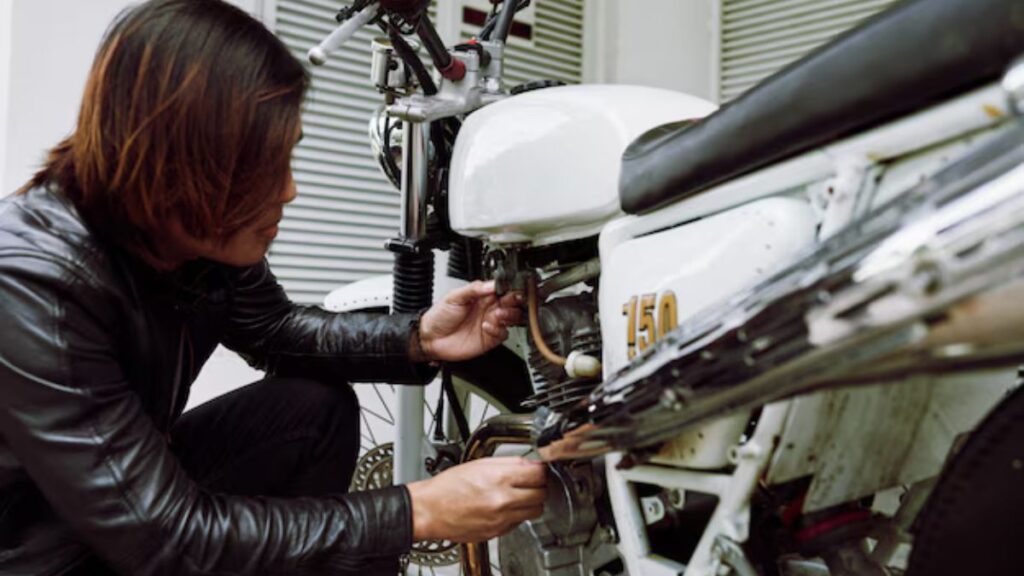VT1000 pitting is a term that might not be familiar to everyone, but it’s a crucial issue in the world of industrial machinery. This phenomenon can lead to severe damage and significant downtime if left unchecked. Picture this: your equipment is running smoothly one moment, and the next, it suffers from unexpected wear and tear. What happened? That’s where understanding VT1000 pitting comes into play.
This blog will dive deep into what causes VT1000 pitting, its effects on production efficiency, and how you can effectively prevent or repair it before it wreaks havoc on your operations. Whether you’re in manufacturing or maintenance management, grasping the ins and outs of VT1000 pitting could save you time, money, and headaches down the line. Let’s uncover the details together!
What Causes VT1000 Pitting?
VT1000 pitting typically arises from a combination of factors that can jeopardize equipment integrity. One primary cause is the presence of corrosive agents in the working environment. These agents, often found in manufacturing processes, can lead to localized degradation.
Another significant factor is inadequate surface preparation before application. If surfaces are not cleaned or treated properly, weaknesses may develop, making them more susceptible to pitting.
Operating under extreme conditions also plays a role. High temperatures and pressures can exacerbate wear and tear on materials, leading to faster deterioration.
Poor maintenance practices contribute greatly to VT1000 pitting. Regular inspections and timely interventions are crucial in identifying early signs of damage before they escalate into serious issues. Ignoring these aspects invites trouble for any operating system reliant on durability and performance.
Effects of VT1000 Pitting on Equipment and Production
VT1000 pitting can have significant implications for equipment performance and overall production efficiency. This type of corrosion leads to the formation of small holes or pits on metal surfaces, compromising their structural integrity. As a result, machinery may experience unexpected failures.
When components degrade due to pitting, maintenance costs can escalate quickly. Frequent repairs not only strain budgets but also divert resources from critical operations. Downtime becomes inevitable as technicians work to address issues caused by this corrosion.
Moreover, product quality may suffer due to inconsistent machinery performance. If equipment malfunctions occur during production runs, defects in finished goods are likely.
In high-demand environments, the repercussions of VT1000 pitting extend beyond immediate operational concerns. They threaten deadlines and customer satisfaction while potentially damaging reputations within competitive industries.
Solutions for Preventing and Repairing VT1000 Pitting
Preventing VT1000 pitting starts with proper material selection. Choosing corrosion-resistant alloys can significantly reduce the risk of damage.
Regular monitoring is also crucial. Implement ultrasonic testing or visual inspections to catch issues early. Early detection makes repairs easier and less costly.
When it comes to repair, tools like welding and grinding are effective methods. These techniques restore surface integrity while extending equipment life.
Another solution lies in enhancing protective coatings. Applying specialized paint or sealants creates a barrier between the metal and corrosive environments, minimizing exposure.
Training your team on best practices further aids prevention efforts. Knowledgeable staff can identify potential problems before they escalate into major repairs.
Maintaining optimal operating conditions is vital. Keeping temperature and humidity levels in check limits factors that contribute to pitting formation.
Industry Examples of Successful Prevention and Repair
Many industries have faced the challenge of VT1000 pitting, yet some have successfully tackled this issue.
In the aerospace sector, one manufacturer revamped its maintenance protocols. They incorporated advanced ultrasonic testing to detect early signs of pitting. This proactive approach minimized equipment failure and extended component life significantly.
Meanwhile, a food processing plant implemented regular cleaning schedules for their machinery. By reducing corrosive residue build-up, they saw a remarkable decrease in pitting incidents. Their focus on hygiene not only improved product quality but also ensured smoother operations.
The automotive industry has also made strides by using high-grade materials that resist corrosion. One company reported fewer repairs and enhanced performance after switching to these durable components.
These examples highlight how tailored strategies can effectively combat VT1000 pitting across different sectors. Each success story serves as an inspiration for others facing similar challenges in prevention and repair efforts.
Importance of Regular Maintenance and Inspection in Avoiding VT1000 Pitting
Regular maintenance and inspection are key to preventing VT1000 pitting. This proactive approach can save time and money in the long run.
Routine checks help identify early signs of wear or corrosion. Catching these issues before they escalate is crucial for equipment longevity.
Proper cleaning schedules play a significant role as well. Dust, dirt, and corrosive materials can accelerate pitting if left unchecked.
Training staff on recognizing potential problems boosts overall efficiency. An informed team can address minor concerns before they develop into major failures.
Documentation of inspections creates a valuable history of equipment performance. This information aids in understanding patterns that could lead to future pitting issues.
Investing in regular maintenance ensures reliability and productivity within operations. Prioritizing this practice fosters a culture of care and diligence across teams involved in managing equipment lifespan.
Conclusion
VT1000 pitting is a significant concern for many industries that rely on durable and efficient equipment. Understanding the causes helps in identifying potential risks early, ultimately safeguarding production processes. The negative effects of VT1000 pitting can extend beyond equipment damage; they may also lead to financial losses and decreased operational efficiency.
Preventive measures are essential. Regular maintenance, careful monitoring, and prompt repairs can mitigate these issues effectively. Industries have demonstrated success through proactive strategies, showcasing how targeted solutions yield positive outcomes.
Regular inspections play a crucial role in avoiding VT1000 pitting altogether. By staying ahead of potential problems, companies can ensure their machinery operates at peak performance while extending its lifespan. Embracing a culture of vigilance not only protects assets but also promotes overall productivity across operations.
Addressing VT1000 pitting thoughtfully will not just enhance performance but foster reliability within your manufacturing process as well. Prioritizing these practices is an investment in both quality and efficiency for any operation reliant on such critical equipment.
